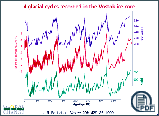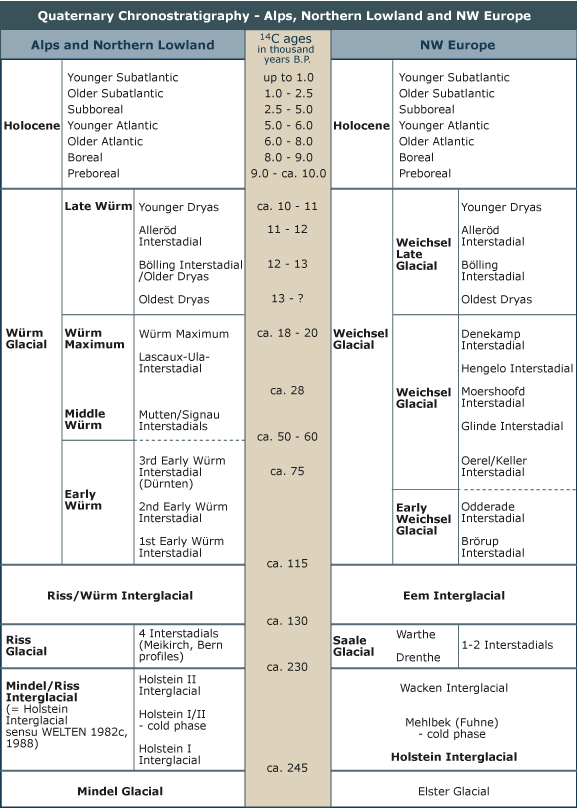 |
|
|
|
|
|
| The
global temperature fluctuations of the Last Ice Age are relatively
well known from polar ice core analysis. In Figure 1, the temperature
variations during the last four glacial-interglacial cycles, inferred
from the Vostok ice core (Antarctica), are given. Also shown is the
high correlation between temperature and methane and carbon dioxide
content. |
1 - Temperature variations during the last four glacial-intergalcial cycles (Vostock ice core, Antarctica) (540K) |
| During the last ice age, which lasted more than 100 000 years, stadial (relatively cold) and interstadial (relatively warm) periods alternated, with a temperature minimum at about 20,000 years BP. In many mountain areas, this temperature minimum was the period of maximum glacier advances, referred to as the global Last Glacial Maximum (LGM). In Alpine Regions e.g., the LGM is called Würm Maximum (Fig. 3). In contrast, in very dry mountain areas and many tropical
regions the advancement of glaciers was limited due to the lack of moisture.
An impressive example is the Central Andes. Like today, glaciation in
dry alpine areas was not restricted by temperature but by lack of moisture
and high ablation rates. In these regions, maximum glacier advances occurred
prior to the LGM and also often in the Late-glacial period after the
LGM, when increased humidity enabled ice accumulation of glaciers. |
2 - Chronostratigraphy of the last 245 000 years. For the
Last Ice Age (c. 115 000 – 10 000 years ago) and its stadial and
interstadial periods as well as for earlier Ice Ages, different nomenclatures
are used in different regions. Figure 3 shows the nomenclatures used
in the Alps/Northern Lowlands and in North-western Europe. (Burga & Perret,
1998) |
Comparison of maximum glacier advances in the Alps and in the Andes.
|
29 August 2011 |
||
| |
||

